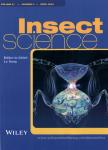Population genetic structure of the biological control agent Macrolophus pygmaeus in Mediterranean agroecosystems
Population genetic structure of the biological control agent Macrolophus pygmaeus in Mediterranean agroecosystems作者机构:IRD UMR (INRA/IRDICiradlMontpellier SupAgro) Centre de Biologie pour la Gestion des Populations INRA UMR (INRA/IRDI CiradlMontpellier SupAgro) Centre de Biologie pour la Gestion des Populations 755 avenue du Campus Agropolis CS 30016 34988Montferrier-sur-Lez France
出 版 物:《Insect Science》 (昆虫科学(英文版))
年 卷 期:2017年第24卷第5期
页 面:859-876页
核心收录:
学科分类:0710[理学-生物学] 0830[工学-环境科学与工程(可授工学、理学、农学学位)] 07[理学] 070602[理学-大气物理学与大气环境] 0706[理学-大气科学] 0904[农学-植物保护] 0901[农学-作物学] 0713[理学-生态学]
基 金:Institut de Recherche pour le Developpement
主 题:biological control commercial vs. wild strains Macrolophus pygmaeus microsatellites mtCytb population genetics
摘 要:Biological control of agricultural pests relies on knowledge of agroecosystem functionality, particularly when affected by the use of mass-produced biological agents. Incorporating pre- and/or post-release information such as genetic diversity and struc- ture on these agents using molecular-based approaches could advance our knowledge of how they perform in agroecosystems. We evaluated the population genetics of Macrolo- phus pygmaeus, the most widely used predatory mirid against many arthropod pests of greenhouse crops in the Mediterranean region, using the mitochondrial Cytb sequence and microsatellite data, and population genetics and phylogeny approaches. We investigated commercially mass-produced insects (i.e., commercial insects either mass-reared in the laboratory for many generations, or purchased by farmers and released in the greenhouses) and "wild" insects (i.e., that occur naturally outside or are collected in nature for release in the greenhouses). The mirids were mainly collected in agroecosystems in which solana- ceous plants are grown in northern Spain, southern France and Greece. Both molecular markers and approaches distinguished 2 genetically differentiated populations. The less genetically diverse population, hereafter named the "commercial" strain included all indi- viduals from laboratory mass-rearings and most releases of commercially bred individuals. The most genetically diverse population mainly comprised individuals originating from noncultivated environments, or from releases of"wild" individuals. Rare examples of hy- bridization between M. pygmaeus from the 2 populations were observed and asymmetric gene flow was revealed. These findings provide new insights into what happens to M. pyg- maeus released in the agroecosystems we studied, and show that it is possible to monitor some commercial strains.



